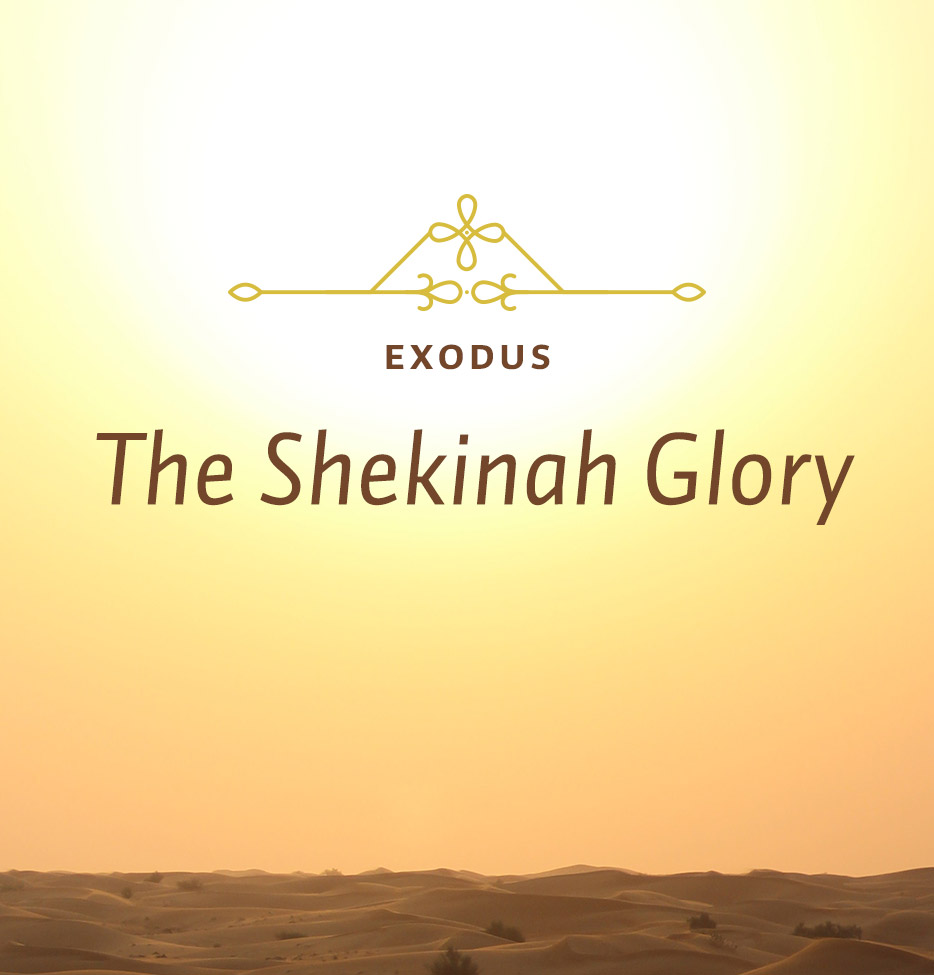There are not many studies of the great cloud that protected the Hebrew people during the years of their desert wanderings. I think that is surprising, and for two reasons. It was a striking phenomenon. There has never been anything like it in history before or since. And not only was it striking, it’s mentioned many times in the Bible. There are fifty-eight references to it in the Bible, scattered across ten different books. It appears more often than place names like Bethlehem and Nazareth, or the names of Herod, Joseph, Mary, Cain, Abel and Satan.
This cloud appeared for the very first time when the people left Egypt. It appeared as a great pillar of cloud that went before them in the daytime to direct them in the way that they should go. It turned into a pillar of fire by night, as we first see in Exodus 13:21-22. In the very next chapter, when the Egyptians were pursuing them and they were trapped, as it seemed, between the pursuing armies of Pharaoh and the Red Sea that was in front of them, the cloud went behind the people and protected them from attack by the Egyptians. We’re told that it was light toward the camp of the Israelites and darkness toward the Egyptians (see Ex. 14:19-20).
After that it appears many more times. You can track it throughout the Pentateuch. It also appears at the dedication of Solomon’s temple. According to 1 Kings 8:10, it descended on the temple as God’s way of indicating His blessing upon the work that was done and His intention to dwell among His people. It seems to have been the same cloud that appeared on the Mount of Transfiguration when Jesus was changed before His disciples. We’re told a great cloud came and shielded Him from their sight and they heard a voice out of the cloud, which was God the Father’s declaration of the identity of His Son (Matt. 17:5). It may even have been present at Jesus’ ascension. When Jesus was taken up from earth, we’re told that a cloud received Him and He disappeared from their sight (see Acts 1:9).
Now in Exodus this appearance of the cloud is the very climax of the book. Isn’t that interesting? We’ve been studying this remarkable story of Moses. It has to do with the deliverance from the armies of Pharaoh and all of the plagues upon Egypt. And then in the latter half of the book we have the giving of the law. Yet, the event that climaxes it all is this descent of the cloud upon the tent of meeting, and God’s glory filling the tabernacle.
I pointed out before that virtually the same material is given over three times in this final section of Exodus. In the first presentation of this material (see Ex. 25-31) God tells them what they are to do, and in the second presentation (see Ex. 35-39:31) we’re told in almost the same words that this is what they did. This brings us to the middle of Exodus 39, where it’s summarized again in a certain way. We’re told that the people did everything God had told them to do, just as the Lord had commanded (see Ex. 39:32, 43), and we have a description of all the things they made.
Now there were plenty of times in their history when the people did not do what the Lord commanded. We’ve already seen one great example in the making of the golden calf, and we are going to see many other examples later. But as far as the building of the tabernacle was concerned, they did just as the Lord had commanded, and as a result of that, God blessed them. Blessing always follows obedience. It would be wonderful if that statement could be written over the lives of Christian people today: “He” or “she” or “you”—whoever it may be—“did just as the Lord commanded, and as a result of that received God’s blessing.”
So, we’re told in chapter 39 that they completed the work. The first half of Exodus 40 contains the words of the Lord to Moses, telling him to set up the tabernacle and exactly how to do it (vv. 1-15). Then, beginning in verse 16, we’re told that he did it exactly as God commanded. Multiple times you read nearly identical phrases that show obedience (vv. 16, 19, 21, 23, 25, 27, 29, 32). All these things were done exactly as the Lord had commanded. Three times in these two chapters we are told that they made it, God told them to set it up, and then Moses set it up.
At the very end, the cloud came and descended upon the Tent of Meeting: “Then the cloud covered the tent of meeting and the glory of the LORD filled the tabernacle. Moses could not enter the tent of meeting because the cloud had settled upon it and the glory of the LORD filled the tabernacle” (Ex. 40:34-35). Now that was God’s way of saying that He was pleased with the work and that He was content to dwell with His people.






